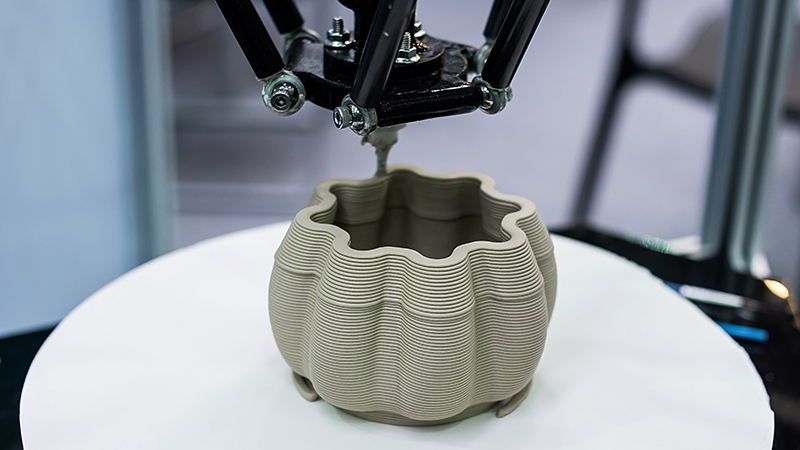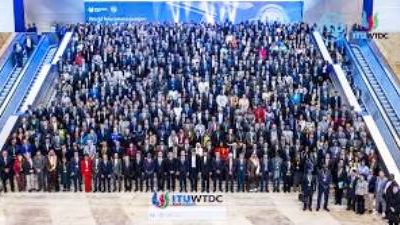This year, the first company to enter the ceramic 3D printing landscape – Lithoz – is celebrating its 10th anniversary. “When we started the company, nobody was actually able to do the additive manufacturing of high-performance ceramics,” stated Dr. Johannes Homa, CEO of Lithoz. In the 10 years since Lithoz’s founding, at least 12 other companies have introduced their own industrial-level ceramic-focused or ceramic-compatible 3D printers. Which technologies have been brought to the table in ceramic 3D printing, the newcomer to additive manufacturing? What are their advantages and disadvantages, opportunities and threats? In their new report, “3D Printing Ceramics 2022-2032: Technology and Market Outlook”, IDTechEx benchmarks the printing processes and technologies present in ceramic additive manufacturing to answer these questions. Of the many 3D printing processes in the world of additive manufacturing, IDTechEx particularly highlights the following as the market leaders:
Vat Photopolymerization
The most popular printing process within ceramic additive manufacturing is vat photopolymerization (VPP), including stereolithography (SLA) and digital light processing (DLP). Three of the market leaders – Lithoz, Admatec, and 3D Ceram – all produce DLP (Lithoz/Admatec) or SLA (3D Ceram) ceramic-focused printers. In VPP-based ceramic printing, ceramic powder is mixed into UV curable polymer resin to form a ceramic slurry; the exact amount of ceramic incorporated varies based on the ceramic used. After printing, the green part is first debinded in a furnace to remove the polymer resin. Then, the green part is sintered in a furnace to densify the ceramic and produce the final printed part.
Material Extrusion
The category of material extrusion includes fused filament fabrication or fused deposition modeling (FFF/FDM), arguably the most popular 3D printing technology worldwide. Ceramic FFF/FDM involves thermoplastic filaments loaded 50% with ceramic powder, like alumina or zirconia, that are used for 3D printing. Like in vat photopolymerization, the printed parts are debinded and sintered to create the final ceramic part. Though there are several ceramic thermoplastic filaments on the market, FFF/FDM is not the most popular type of material extrusion in ceramic additive manufacturing.
RELATED 3D Printing Disrupting Provisioning Of Personalized Medicine, Says IDTechEx Research
That title belongs to paste extrusion, also known as clay extrusion, one of the most visible ceramic 3D printing technologies on the market. Videos of paste extrusion printers from manufacturers like 3DPotter, WASP, and CERAMBOT can easily be found on the internet. Most commonly, paste extrusion printers are used to print clay into sculptures and pottery that is then fired. That said, paste extrusion printers are being experimented with to produce other interesting ceramic objects, like building bricks or even houses.
Binder Jetting
Binder jetting is the primary powder bed-based printing technology present in the ceramic 3D printing landscape. Ceramic binder jetting involves the deposition of binder droplets from an inkjet head onto a bed of ceramic powder; this deposition process continues layer-by-layer until the part is completed, after which the part is debinded from the powder bed and sintered. Unlike vat photopolymerization and FFF, there are no intermediary polymers used to produce the ceramic print. Two market leaders in binder jetting – ExOne and voxeljet AG – produce printers that are not exclusively for or marketed towards ceramic 3D printing but are compatible with ceramic powders. On the other hand, there are binder jetting printers from manufacturers like ComeTrue and Kwambio that are targeted towards ceramic additive manufacturing.
3D printing technologies available in the ceramic additive manufacturing market. Source: IDTechEx.
What About New Innovative Technologies?
The technology landscape in ceramic additive manufacturing is not staying static; as new players enter the ceramic 3D printing industry each year, the landscape becomes more dynamic with interesting technologies.
For example, XJet’s innovative “Nanoparticle Jetting” technology brings material jetting as a printing process category to the ceramic additive manufacturing field. Nanoparticle jetting involves the droplet deposition of ceramic nanoparticles suspended in liquid. Nanoparticle jetting sets itself apart from polymer material jetting, where each droplet is cured by UV light; rather than using UV light, heat is used to evaporate the suspension liquid, leaving only the ceramic behind.
Another example of interesting printing technologies come from pellet extrusion manufacturers like Pollen-AM and Uprise 3D. These manufacturers seek to take advantage of readily available ceramic injection molding (CIM) pellets to use as 3D printing feedstock. Their printers melt CIM pellets within their extrusion heads and then extrude the ceramic-loaded polymer feedstock in the XY plane (much like FFF/FDM printers, but replacing filaments with pellets).
Lastly, microscale additive manufacturing is coming to the ceramic 3D printing field as micro-AM leader Boston Micro Fabrication (BMF) recently debuted a new printer compatible with ceramics. The microArch S230 is compatible with two new ceramic resins from BMF: alumina and magnesium titanate.
Market Predictions for Ceramic 3D Printing
Overall, in the 10 years since the first industrial ceramic 3D printer launched, ceramic additive manufacturing has seen several new technologies innovate the market. IDTechEx predicts that the next 10 years will see continued innovation from a technology standpoint, as companies continue to develop and diversify their ceramic printers.































